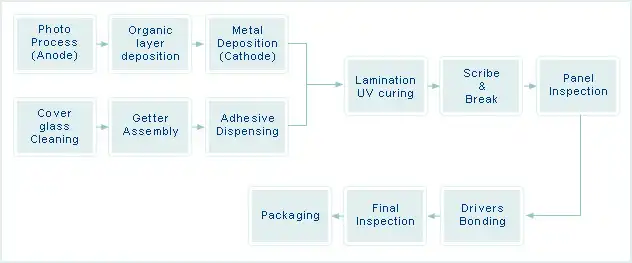Introducing OLED
| What is OLED? |
| Organic Light-Emitting Diodes (OLED) display monitors, also referred to as Organic Electroluminescence (OEL) display monitors, have the new generation of technology that is not easily reached by other flat-screen display technology – brighter and clearer full-colored images and faster response times. |
| OLED explained: |
| Organic Light-Emitting Diodes (OLED) is a flat-screen display technology that surpasses the (Liquid Crystal Display (LCD). Its characteristics include thin, light, small, intricate, sensitive, bright colors, and power-saving. In the near future, television screens as thin as paper, and scroll-type e-paper will no longer be dreams. |
OLED characteristics:
|
| OLED manufacturing process: |
 |
| Lighting principles of OLED: |
| The basic structure of OLED uses thin and transparent indium tin oxide (ITO) with semiconductor properties as the anode with a metallic cathode to sandwich the organic material layer. The organic material layer includes the hole transport layer (HTL), emissive layer (EL), and the electron transport layer (ETL). When the battery provides suitable voltage (characteristics of low voltage), and electrical charges combine in the anode hole and the cathode at the emissive layer, it elicits electroluminescence in the organic material. The framework of the organic layer and selection and design of the anode and cathode are keys to light emission by OLED devices. |


